This question is in continue to (LSTM - Making predictions on partial sequence). As described in the previous question I've trained a stateful LSTM model for binary classification with batches of 100 samples/labels like so:
[Feature 1,Feature 2, .... ,Feature 3][Label 1]
[Feature 1,Feature 2, .... ,Feature 3][Label 2]
...
[Feature 1,Feature 2, .... ,Feature 3][Label 100]
Model Code:
def build_model(num_samples, num_features, is_training):
model = Sequential()
opt = optimizers.Adam(lr=0.0005, beta_1=0.9, beta_2=0.999, epsilon=1e-08, decay=0.0001)
batch_size = None if is_training else 1
stateful = False if is_training else True
first_lstm = LSTM(32, batch_input_shape=(batch_size, num_samples, num_features), return_sequences=True,
activation='tanh', stateful=stateful)
model.add(first_lstm)
model.add(LeakyReLU())
model.add(Dropout(0.2))
model.add(LSTM(16, return_sequences=True, activation='tanh', stateful=stateful))
model.add(Dropout(0.2))
model.add(LeakyReLU())
model.add(LSTM(8, return_sequences=True, activation='tanh', stateful=stateful))
model.add(LeakyReLU())
model.add(Dense(1, activation='sigmoid'))
if is_training:
model.compile(loss='binary_crossentropy', optimizer=opt,
metrics=['accuracy', f1])
return model
When predicting, the model is stateless, batch size is 1 and the classification probability is retrieved after each sample like so:
[Feature 1,Feature 2, .... ,Feature 10][Label 1] -> (model) -> probability
calling model.reset_states() after the model finished processing a batch of 100 samples. The model works and the results are great.
Note: My data are events coming from multiple sources.
My Problem:
When I test my model I have control over the order of the samples and I can make sure that the samples arrive from the same source. i.e all first 100 samples are from source 1, then after calling model.reset_states() the next 100 samples are from source 2 and so on.
On my production environment, however, the samples arrives in an async way for example:
First 3 samples from source 1 then 2 samples from source 2 etc'
Ilustration:
My Question:
How can I serialize the model state at a certain timestamp for each source, so I can save it after each sample then load it back when a new sample arrives from the same source.
